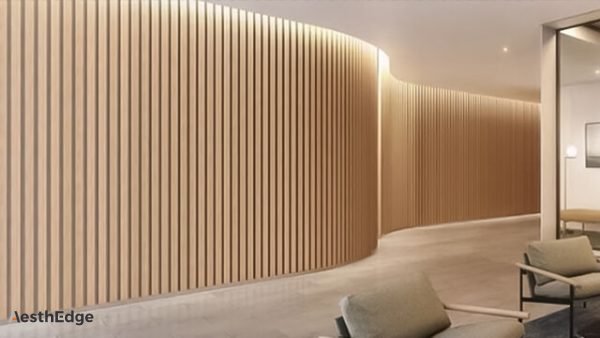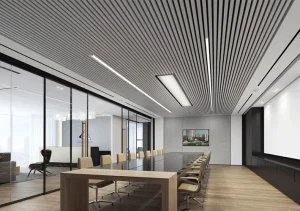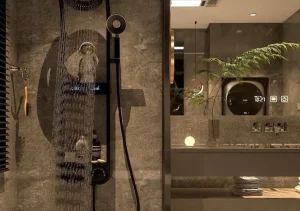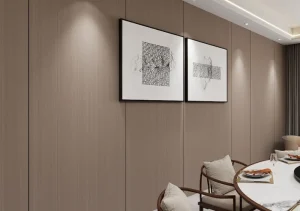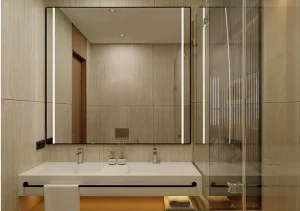In the evolving world of interior decoration and building materials, bamboo charcoal wood veneer has emerged as a premium eco-friendly material favored for its natural aesthetics, air-purifying properties, and structural benefits. As sustainability becomes a primary concern for both consumers and developers, the demand for greener, high-performance surface materials continues to grow. This article provides a comprehensive exploration of the composition of bamboo charcoal wood veneer, analyzing its structural layers, raw materials, performance-enhancing additives, and why it stands out in modern construction and decoration markets.
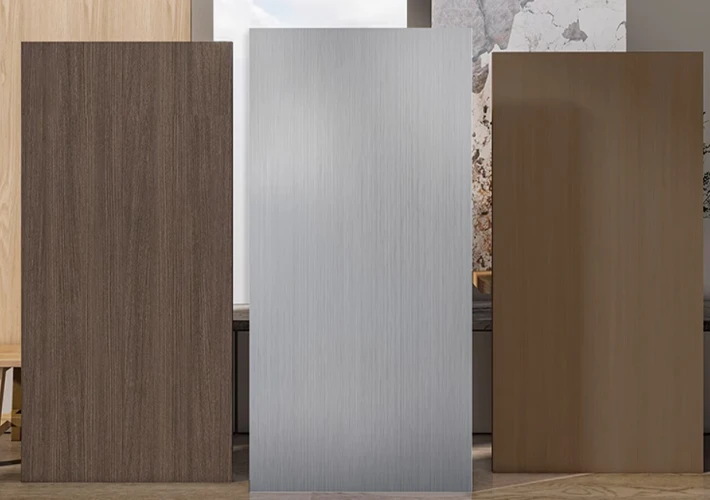
Table of Contents
ToggleWhat is Bamboo Charcoal Wood Veneer?
Bamboo charcoal wood veneer is a decorative wall panel material that combines natural bamboo charcoal powder with wood-based fibers and polymer resins, processed into sheets with realistic wood grain textures. Unlike conventional wood veneer, which is made purely from thin slices of real wood, bamboo charcoal veneer integrates bamboo charcoal for enhanced functionality, such as formaldehyde adsorption, humidity regulation, deodorization, and anti-mold properties.
It is typically used for:
- Interior wall decoration
- Ceiling panels
- Cabinet and furniture surfaces
- Commercial spaces such as offices, hotels, and showrooms
Key Layers in Bamboo Charcoal Wood Veneer
Bamboo charcoal wood veneer is generally composed of the following layers:
a. Surface Decorative Layer (Film/Paper/Coating)
This top layer is responsible for texture, pattern, and aesthetics. It can replicate wood, marble, or fabric textures using:
- PVC decorative film
- PET film
- PP film
- Paper overlay with melamine resin
- These films are printed with high-resolution patterns and sometimes embossed for a tactile woodgrain feel.
b. Bamboo Charcoal Core Layer
The core of the product contains a mix of bamboo charcoal powder and wood powder/fiber. This layer is the most distinctive component and provides:
- Deodorizing properties
- Formaldehyde absorption
- Humidity balance
- Mildew and insect resistance
The bamboo charcoal content typically ranges from 10% to 30% of the core material, depending on the product level and application.
c. Polymer Binder or Resin Layer
To bind all raw materials together, manufacturers use resins and thermoplastic polymers, including:
- PVC (Polyvinyl Chloride)
- PE (Polyethylene)
- PP (Polypropylene)
- PU (Polyurethane) adhesives
This layer contributes to the flexibility, durability, water resistance, and flame retardancy of the panel.
d. Backing or Substrate Layer (Optional)
In some high-end products, a backing layer made of PVC foam board, MDF, or WPC (wood plastic composite) may be included to reinforce stability, improve installation performance, or enable screw-holding strength.
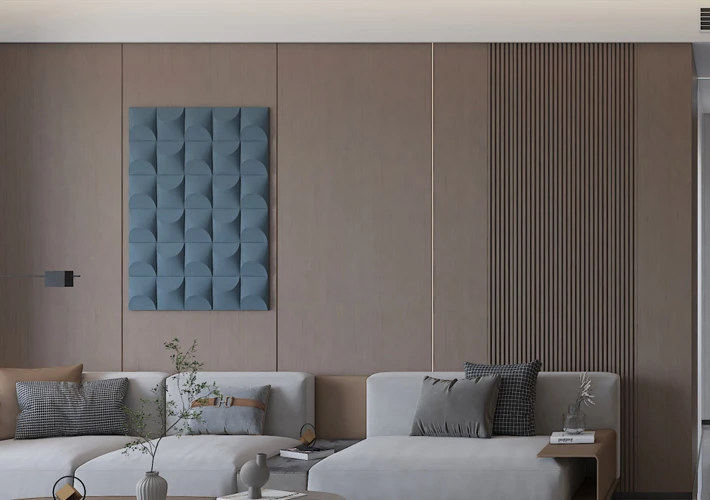
Primary Raw Materials and Their Functions
Let’s break down the raw materials in more detail:
3.1 Bamboo Charcoal Powder
- Source: Carbonized bamboo at 800–1000°C
- Function: Formaldehyde adsorption, anti-odor, mildew resistance
- Particle Size: 50–200 mesh, smaller for better dispersion
Bamboo charcoal has a porous structure with high surface area (~300–500 m²/g), making it ideal for filtering air and absorbing moisture.
3.2 Wood Powder/Fiber
- Source: Poplar, pine, or recycled sawdust
- Function: Adds rigidity, mimics real wood texture, cost-effective filler
- Ratio in mix: 30%–60%
3.3 Thermoplastic Polymer (e.g., PVC/PP/PE)
- Function: Acts as a binder, gives flexibility, water resistance, and thermal stability
- Typical content: 10%–30%
PVC is most commonly used due to its fire retardancy and processing compatibility.
3.4 Additives
Several additives are introduced to improve product quality:
| Additive Type | Function |
|---|---|
| Calcium Carbonate | Filler to reduce cost and increase hardness |
| UV Stabilizers | Prevent color fading and aging |
| Flame Retardants | Enhance fire resistance (Class B1 or B2) |
| Lubricants | Improve extrusion and mold flow |
| Coupling Agents | Improve bonding between fiber and resin |
| Anti-mildew Agents | Prevent microbial growth |
| Pigments & Colorants | Add aesthetic tone and color consistency |
Composition Ratio (By Weight)
While exact formulations vary by manufacturer and product grade, a typical composition might look like this:
| Component | Proportion (%) |
|---|---|
| Bamboo Charcoal Powder | 10–20% |
| Wood Powder | 30–50% |
| PVC/PP/PE Resin | 15–25% |
| Calcium Carbonate | 5–15% |
| Functional Additives | 2–5% |
| Decorative Film/Paper | 1–2% |
Manufacturing Process Overview
Raw Material Mixing: Bamboo charcoal powder, wood powder, resin, and additives are uniformly mixed.
Extrusion or Hot Pressing: The mixture is shaped into panels using hot pressing or extrusion equipment.
Surface Lamination: Decorative film is applied using heat and pressure.
Cooling and Cutting: Panels are cooled and cut into standard sizes (e.g., 1220mm x 2440mm).
Quality Inspection & Packaging
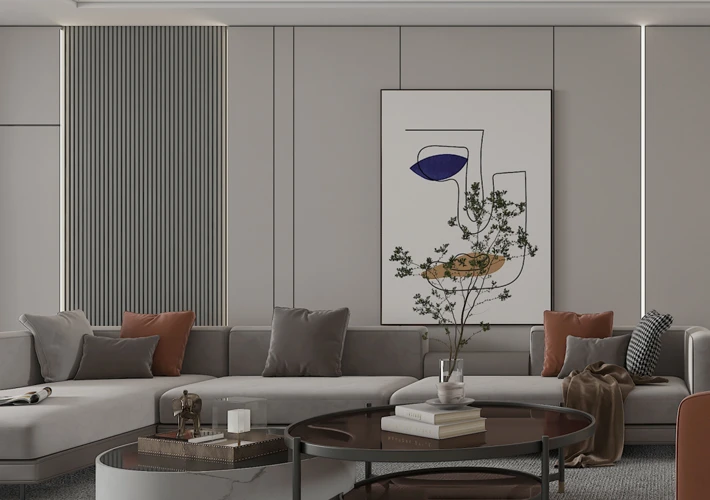
Environmental Benefits of Bamboo Charcoal Veneer
- Renewable Materials: Bamboo is fast-growing and highly sustainable.
- Formaldehyde-Free Options: Some manufacturers offer E0 or E1 grade panels.
- Indoor Air Quality: Adsorption of VOCs and odors improves healthy living environments.
- Carbon Footprint: Bamboo absorbs more CO₂ than traditional hardwoods during growth.
Physical Properties and Performance
| Property | Typical Range |
|---|---|
| Density | 0.8–1.2 g/cm³ |
| Flexural Strength | >20 MPa |
| Water Absorption | <1% (depending on resin) |
| Formaldehyde Emission | E0/E1 standard (<0.5 mg/L) |
| Flame Retardant Grade | B1 or B2 (based on additive content) |
| Surface Hardness | ≥2H (pencil hardness) |
| Sound Absorption | Medium, up to NRC 0.3–0.5 |
Customization Options
Manufacturers can customize panels based on:
- Surface finish: Matt, high gloss, embossed, texture
- Color: Wood tones, grey, white, black, etc.
- Thickness: 5mm, 9mm, 12mm, 15mm, etc.
- Length and width: Can be adjusted to fit wall dimensions
- Edge profile: V-groove, flat, tongue & groove
Applications in Residential and Commercial Spaces
- Residential: TV walls, bedrooms, living room backdrops, wardrobes
- Commercial: Hotel lobbies, office conference rooms, luxury retail stores
- Public Areas: Hospitals, schools, airports (due to anti-mold and eco-friendly features)
Conclusion
The composition of bamboo charcoal wood veneer reflects a careful balance of natural functionality, engineered strength, and aesthetic appeal. Its multi-layer structure—with a bamboo charcoal-infused core, polymer matrix, and decorative top—offers a high-performance solution for interior applications. As sustainability becomes a cornerstone in the architectural world, materials like bamboo charcoal wood veneer are expected to play a key role in future interior design trends.
For manufacturers and distributors, understanding the material composition is essential for ensuring quality control, product development, and satisfying the growing demands of environmentally conscious consumers across global markets.

